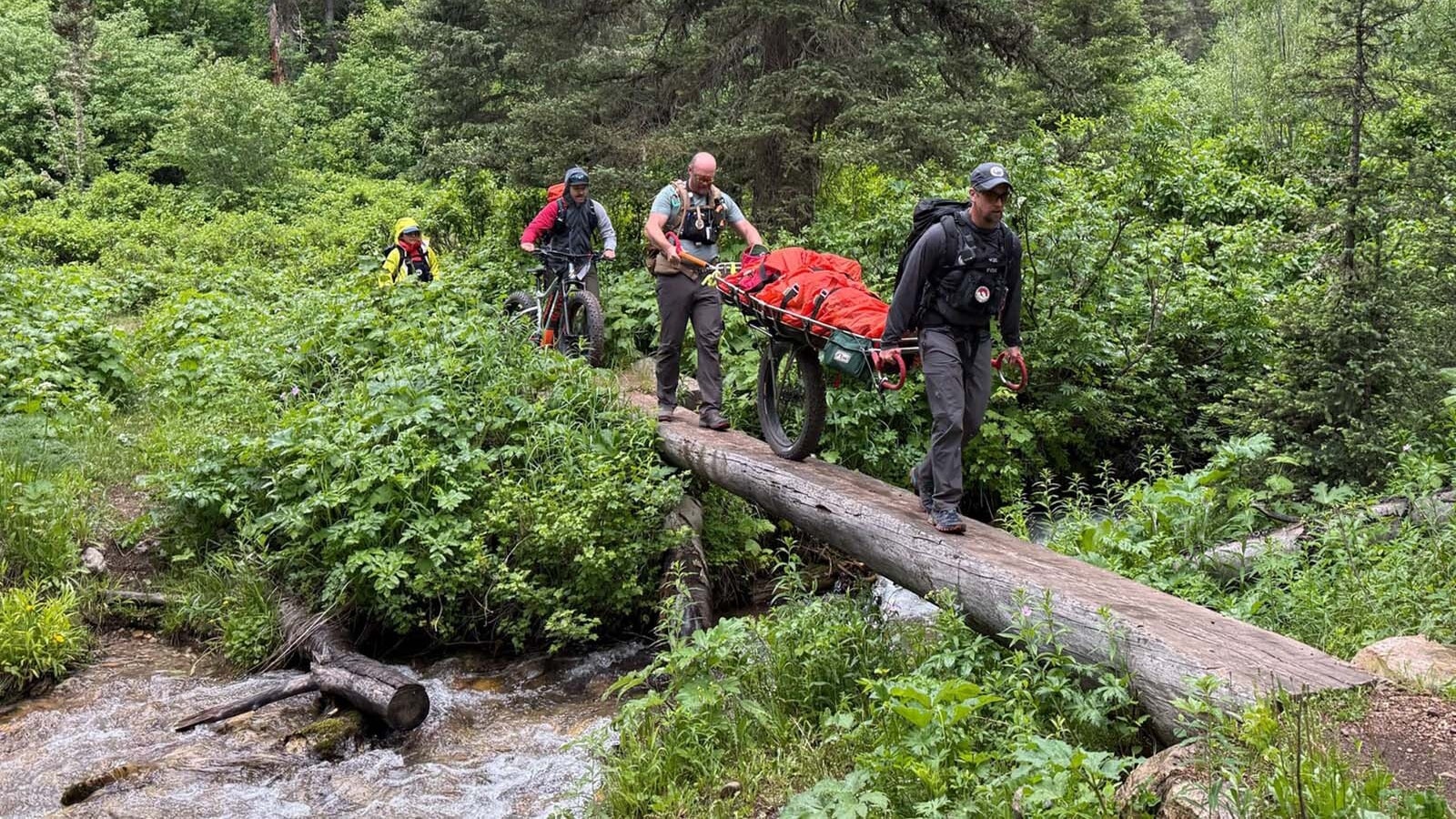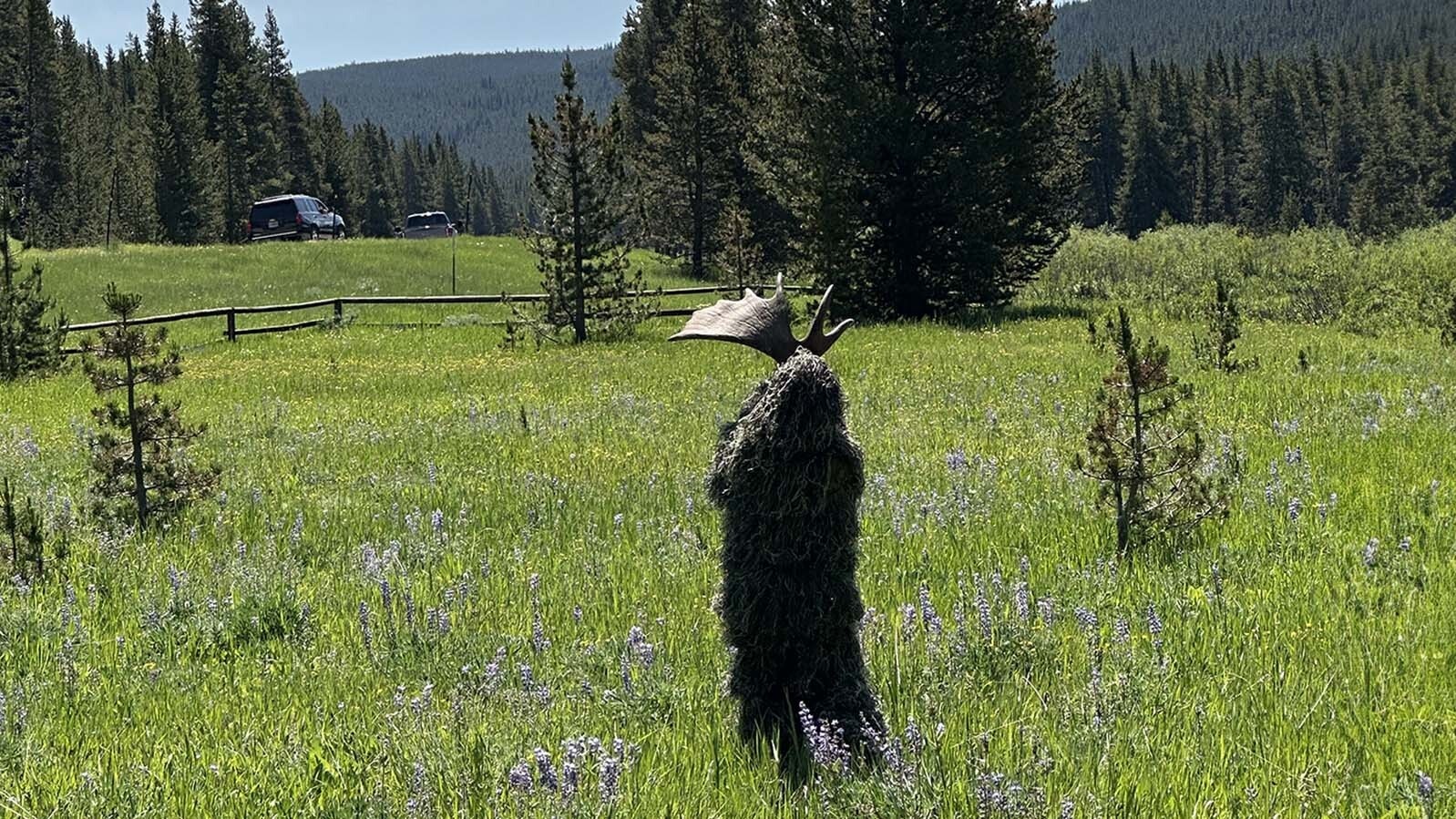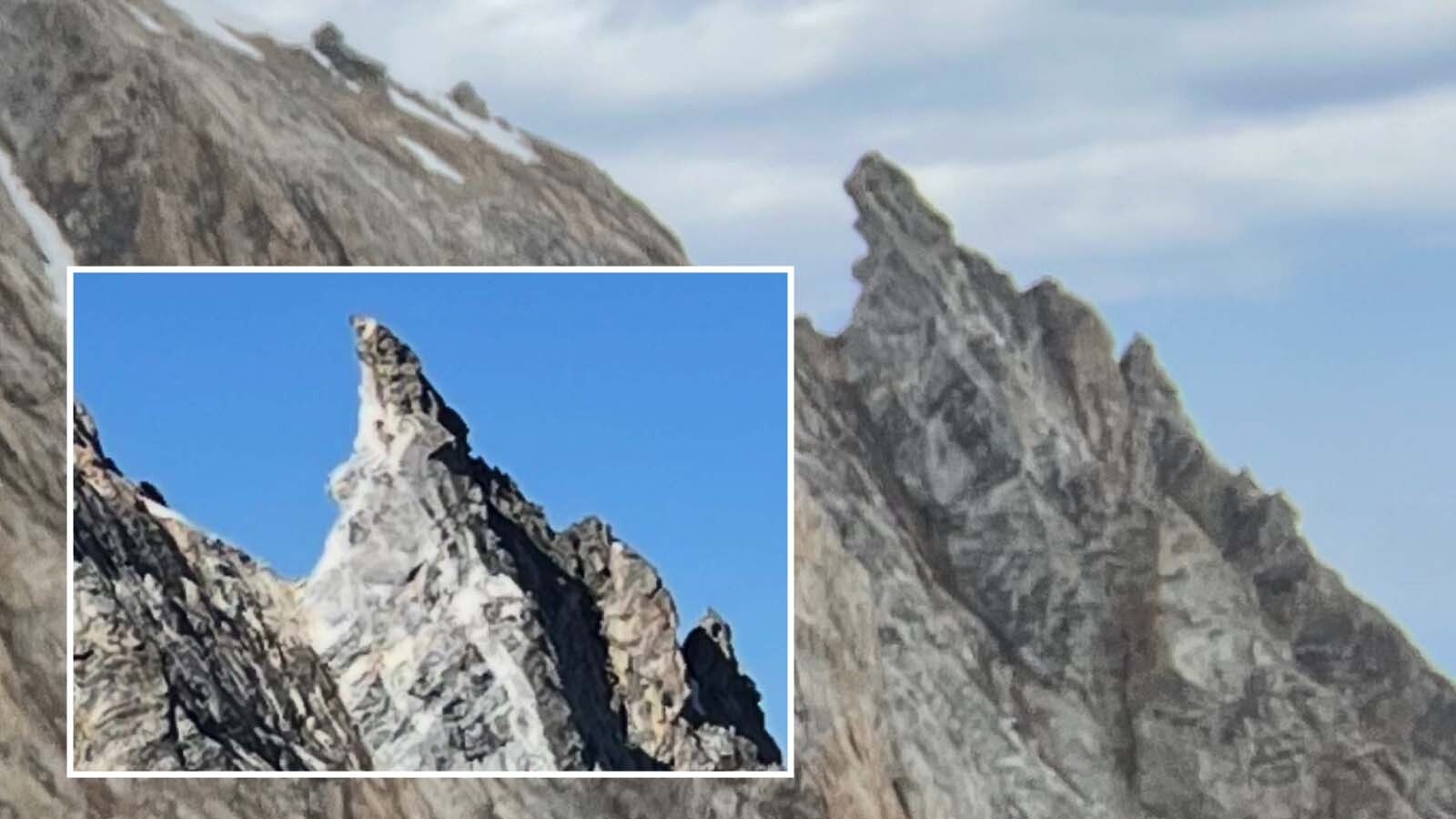Some of the firestorm of public outrage over a Sublette County man allegedly capturing and tormenting a wolf before killing it has been directed at the Wyoming Game and Fish Department, but the agency is in a delicate position, Director Brian Nesvik said.
There has been a perception that the agency was too lenient with the man accused and has deliberately withheld information about the incident, Nesvik told Cowboy State Daily early Monday.
But that’s not the case, he said.
Game and Fish is trying to navigate tricky legal territory between responding to legitimate requests for public records while also trying to follow a state statue that keeps information about wolf hunts confidential.
The incident involving a wolf in Daniel, Wyoming was already generating angry blowback, but the scope of livid reactions from all over the country — and world — went to entirely new levels Saturday when Cowboy State Daily obtained and published a photo showing local resident Cody Roberts on Feb. 29 posing with the wolf, which had its muzzle taped shut.
Nesvik on Monday said that Game and Fish could not yet confirm the identity of the person who had been cited and fined $250 for illegally possessing a live wolf on Feb. 29.
The Incident That Started It All
Accounts of a wolf being captured, tormented and then killed have put Wyoming in the spotlight, and not in a flattering manner.
According to the account of events, a man ran the wolf down with a snowmobile Feb. 29, disabling it, then taped its mouth shut and kept it alive for a time, at one point showing it off to bar patrons in Daniel, a tiny town in Sublette County.
The Wyoming Game and Fish Department verified that somebody was cited and fined for being in possession of a live wolf, but didn’t release that person’s name, the name of the investigating game warden or any exact details of the case.
Sublette County Circuit Court records, however, show that Roberts was cited for a wildlife violation stemming from an incident that day, Feb. 29, and that Adam Hymas was the investigating agent.
Flooded With Requests
Cowboy State Daily last week filed a request for Game and Fish documents related to the case and received a response that it might take some time gather and release the appropriate information.
Game and Fish has been inundated with such records requests after news broke about the alleged torment and killing of the wolf, Nesvik said.
So, the response is partly a simple matter of handling a huge workload, he said.
But Game and Fish also must be mindful of a statute that protects the identity of people who legally kill wolves, according to a measure that was passed by the Wyoming Legislature when wolves were delisted from federal protection several years ago in Wyoming, Montana and Idaho.
“I can’t speak specifically for the Legislature,” Nesvik said, but as he understands it, that statue was put in place “because wolf management is sensitive topic, and they wanted to protect people who legally take wolves from being unduly scrutinized by the public.”
The hunting of wolves – which is legal in Wyoming, Montana and Idaho – hasn’t set well with a significant portion of the public, particularly outside of those states. And that’s made vetting wolf hunters a tricky matter.
Why A $250 Fine?
Much of the public outrage has been over the fact that a $250 fine was apparently the only penalty the defendant faced in the case.
Nesvik explained that the killing of the wolf was legal, according to wolves’ classification as a predatory animal in that part of Wyoming. From the agency’s standpoint, the only illegal element in the case was capturing and keeping a live wolf, which is a misdemeanor.
Possession of a live wolf was made illegal and deemed a misdemeanor by a ruling of the Wyoming Game and Fish Commission, which sets many of the policies that are to be enforced by game wardens, Nesvik said.
As for possible stiffer penalties stemming from charges of the harassment of wildlife or animal cruelty, those would not apply in the case of a predatory animal, Nesvik said.
Game and Fish doesn’t enforce animal cruelty statutes, he said, adding that harassment of wildlife statutes don’t apply to predatory animals.
As to whether animal cruelty charges might be leveled through the county, Sublette County Attorney Clayton Melinkovich told Cowboy State Daily on Monday that remains an open question.
“In my review of the statutes regarding animals, conduct that is prohibited under the animal abuse statutes may apply to predators in certain circumstances,” he said. “That being said, I cannot comment about investigations in Sublette County or whether or not an investigation has occurred or will or will not occur.”
What Is A Predatory Animal?
Much of the confusion mixed with anger over the case has stemmed from Wyoming’s multiple classification of wolves in different parts of the state, and what a predatory animal is.
Wolves are classified three ways in different parts of Wyoming.
Inside Yellowstone and Grand Teton national parks, they remain classified as fully protected and may not be hunted by the public.
In some of the lands adjacent to the parks, they are classified as a trophy game species. That means they may be hunted. But hunters must have wolf hunting tags, and may kill wolves only during specified hunting seasons and within bag limits.
And in those areas, tormenting a wolf could possibly result in harassment of wildlife charges, as those statutes apply to trophy game animals.
Beyond the trophy game zones, wolves may be hunted and killed at any time, with no tags required and no bag limits.
Predatory animals are species determined to be outside of other classifications – such as big game animals, trophy game animals, game bird species and the like, Nesvik said.
Predatory animals have been determined to not require any direct management by Game and Fish, and also aren’t under federal wildlife management authority or protection, he said.
Along with wolves in the predator zone, some other predatory species in Wyoming include jackrabbits and coyotes.
Mark Heinz can be reached at mark@cowboystatedaily.com.





